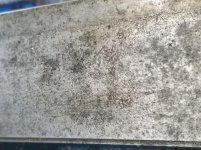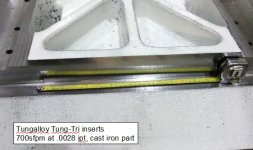rx8pilot
Aluminum
- Joined
- Oct 20, 2009
- Location
- Los Angeles
Hello all -
I have a very well used Kurt D688 with pitted ways. I have never personally done any surface grinding myself and trying to figure out the magnitude of this as a potential refurbishment project.
I live in LA so there are quite a few shops around, but I wanted to educate myself a little before calling. The big question is trying to see if it is financially reasonable to re-grind the bottom and bed (it does not have to match any other vise). The movable jaw most likely needs a fresh surface as well. I have no idea how big of a job this is or if it is worth bothering.
Does anyone with some experience know how long it would take to grind about .005 or so off the bed and bottom and verify they are parallel? Is that a quick and easy or a fiddly, time consuming project that only a good shop can pull off? What would you charge?
Thank you for any advice.
I have a very well used Kurt D688 with pitted ways. I have never personally done any surface grinding myself and trying to figure out the magnitude of this as a potential refurbishment project.
I live in LA so there are quite a few shops around, but I wanted to educate myself a little before calling. The big question is trying to see if it is financially reasonable to re-grind the bottom and bed (it does not have to match any other vise). The movable jaw most likely needs a fresh surface as well. I have no idea how big of a job this is or if it is worth bothering.
Does anyone with some experience know how long it would take to grind about .005 or so off the bed and bottom and verify they are parallel? Is that a quick and easy or a fiddly, time consuming project that only a good shop can pull off? What would you charge?
Thank you for any advice.












